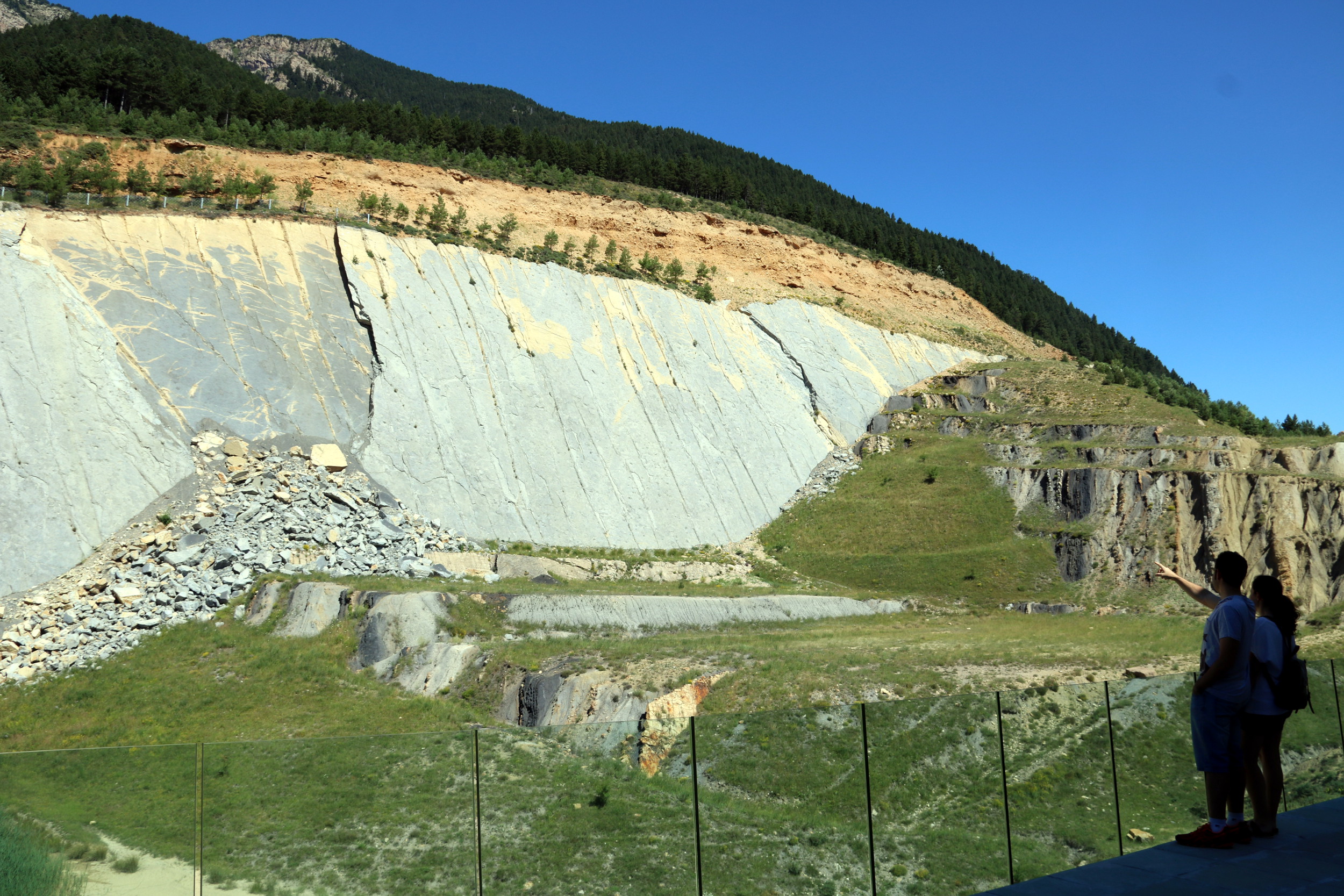‘Fumanya Dinosaur Project’: a world-class paleontological site in the Catalan Pyrenees
The museum is to open its doors on Saturday

Some 70 million years ago, during the Late Cretaceous period, long-necked titanosaurs used to wonder around the Catalan Pyrenees. The dinosaurs are now long gone, but their vestiges remain.
The site of thousands of dinosaur footprints and hundreds of bones, as well as eggs and skin, the “Fumanya Dinosaur Project” is to open a new museum on Saturday to showcase all the findings, which make it one of the most important paleontological sites in the world.
Located in the middle of a mine under the open sky at 1,500 meters, the museum will finally open its doors after years of financial troubles. It is the only place like it in Spain to be located within the paleontological site itself.
Fumanya is the largest site of its kind in Europe with such an extension of sauropod dinosaur footprints from the late cretaceous period that it has earned worldwide importance. The whole paleontological site was declared national heritage of cultural interest in 2005.
The director of the Mine Museum in Cercs, Alba Boixader, told ACN that these findings make the site a unique place in the world, and that the region hopes to attract more visitors with the “Fumanya Dinosaur Project”, which opens its doors on Saturday.
Boixader also said that the site is very close to the Mine Museum of Cercs (in the Catalan Pyrenees), the most visited place in the area, and that the exhibition on the dinosaurs is primarily aimed at families and schools.
Fumanya’s collection includes more than 3,500 fossilized footprints of dinosaurs and more than 40 other remains. It also has 114 fossils of dinosaurs, crocodiles, tortoises, and remains of marine life, 70 palm leaves, 120 trunks of trees that could have reached heights of up to 14 meters and 30 different levels with remains of shells, eggs and dinosaur skin.
The project, which costed some 2.5 million euros, was launched in 2001 by nearby municipalities of the Berguedà area, located in northern Catalonia.